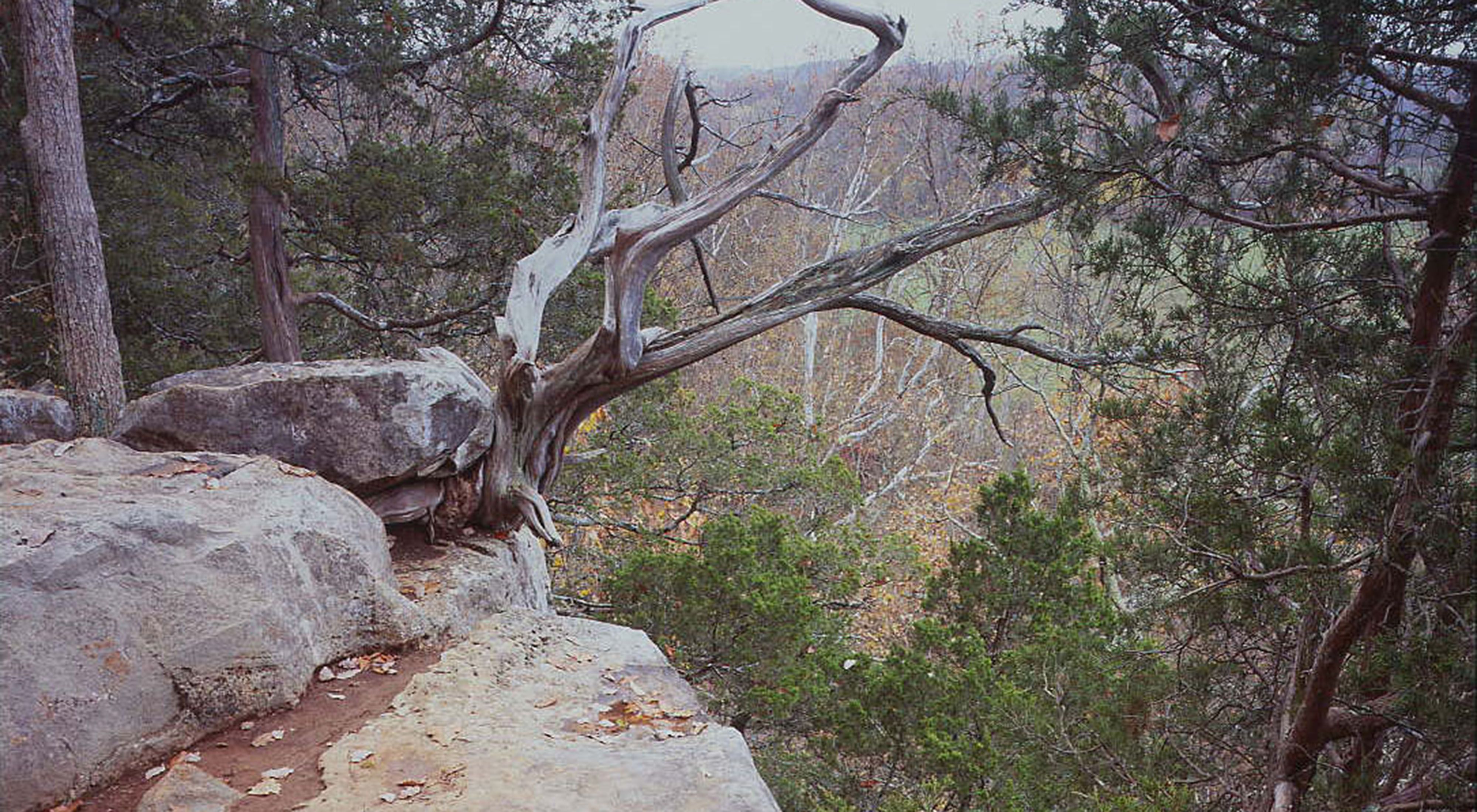Hiking
The hiking trail begins at the preserve sign and follows a narrow access route before entering the southwest corner of the preserve. Download a map of the preserve.
Visitors MUST use this marked access trail from Ketcham Road into the preserve, or they will be trespassing on private property. A small information sign is located just inside the preserve boundary. For your safety and for the protection of this preserve, please follow all the rules posted beneath the sign.
Follow the marked hiking trail until you reach the banks of Clear Creek. The marked trail ends here. At this point, access to the bluffs involves scrambling across the rocky shoreline of Clear Creek downstream to where Cedar Bluff comes to a point. Travel around the point and look for a heavily-used route ascending up the backside of the steep bluff. Once on top of the bluff, an unmarked pathway will lead you to an overlook. When leaving the bluff-top forest, remember to re-trace your steps back down the steep bluffs to Clear Creek. You are trespassing on private property if you walk down the hill from the bluff-top to the road.
CAUTION: The rocks along Clear Creek and along the rocky bluff are extremely slippery when wet. Hike at your own risk. Please do not go west from the bluff across private property to the road. The preserve may only be visited from dawn to dusk.
Despite the hardiness of the plants found at this preserve, they are still very vulnerable to trampling. Help protect the native vegetation by staying on the worn pathways at all times. Also, please keep in mind that as in all nature preserves, rock climbing, rappelling, and campfires are prohibited at Cedar Bluffs.
What to See: Plants and Animals
As the name suggests, red cedar is the most common tree, sharing this rocky spot with white, black, and scarlet oaks. The bluffs are characterized by thin soils and southern exposure and support only those species well adapted for very dry conditions. Many of the species found on these bluffs are more typical of dry prairies, including flowering spurge (Euphorbia corollata), nodding onion (Allium cernuum) and hoary puccoon (Lithospermum canescens). Visit in the spring when wildflowers are out in spectacular display.
Cedar Bluffs is a place that teems with an old and established kind of natural abundance. All around you, wherever you look, you'll find yourself surrounded by a startling array of life. And underlying this growth, you'll see the tell-tale signs of millions of years of geologic activity. The trail itself meanders through flattened slabs of limestone, punctuated by trees, mosses, and iron-rich soil. Every square foot of this preserve is its own complex ecosystem—and the juxtaposition of millions-of-years-old limestone walls with flourishing plant and animal life make it feel as though you're stepping back through time.
